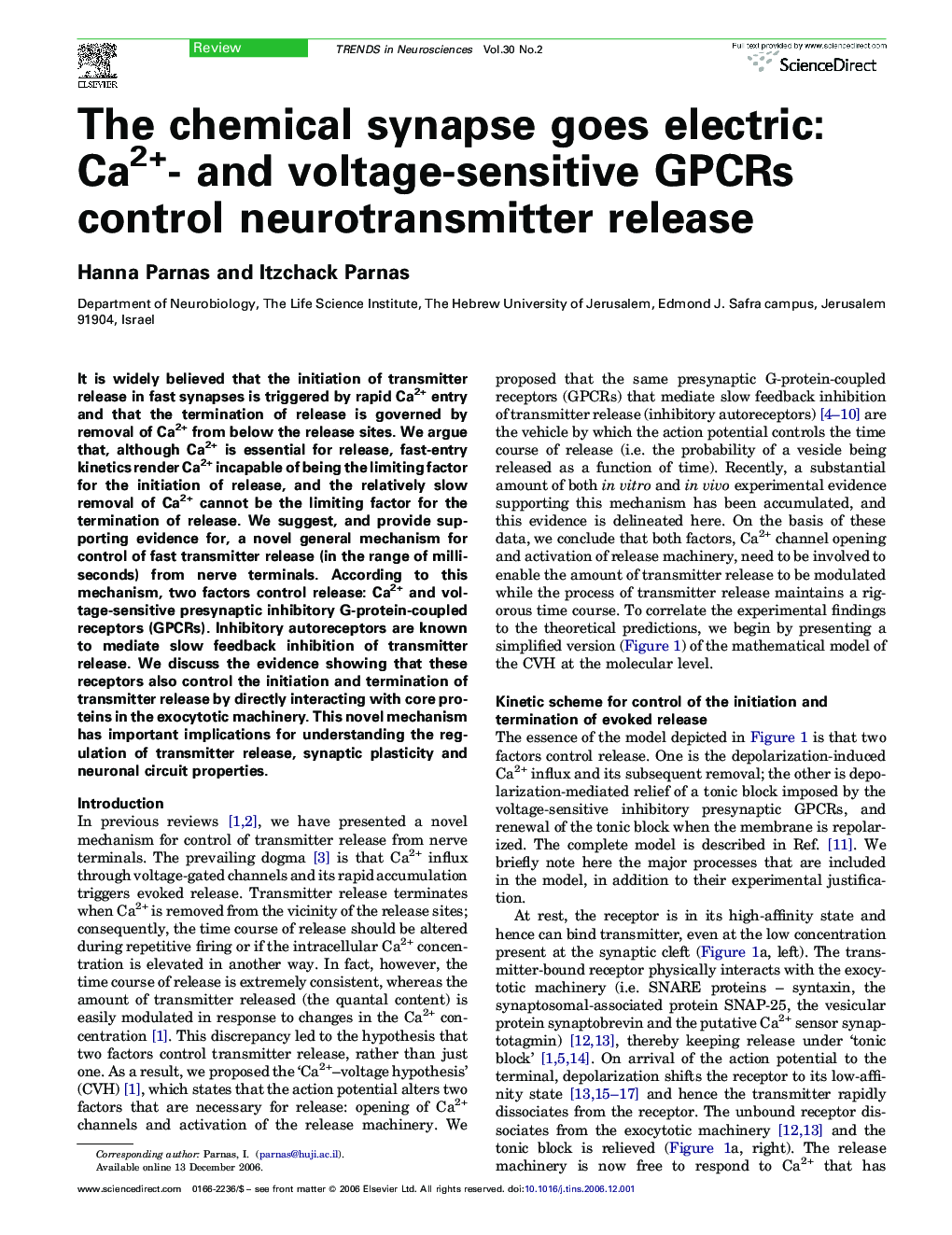| Article ID | Journal | Published Year | Pages | File Type |
|---|---|---|---|---|
| 4355010 | Trends in Neurosciences | 2007 | 8 Pages |
It is widely believed that the initiation of transmitter release in fast synapses is triggered by rapid Ca2+ entry and that the termination of release is governed by removal of Ca2+ from below the release sites. We argue that, although Ca2+ is essential for release, fast-entry kinetics render Ca2+ incapable of being the limiting factor for the initiation of release, and the relatively slow removal of Ca2+ cannot be the limiting factor for the termination of release. We suggest, and provide supporting evidence for, a novel general mechanism for control of fast transmitter release (in the range of milliseconds) from nerve terminals. According to this mechanism, two factors control release: Ca2+ and voltage-sensitive presynaptic inhibitory G-protein-coupled receptors (GPCRs). Inhibitory autoreceptors are known to mediate slow feedback inhibition of transmitter release. We discuss the evidence showing that these receptors also control the initiation and termination of transmitter release by directly interacting with core proteins in the exocytotic machinery. This novel mechanism has important implications for understanding the regulation of transmitter release, synaptic plasticity and neuronal circuit properties.
